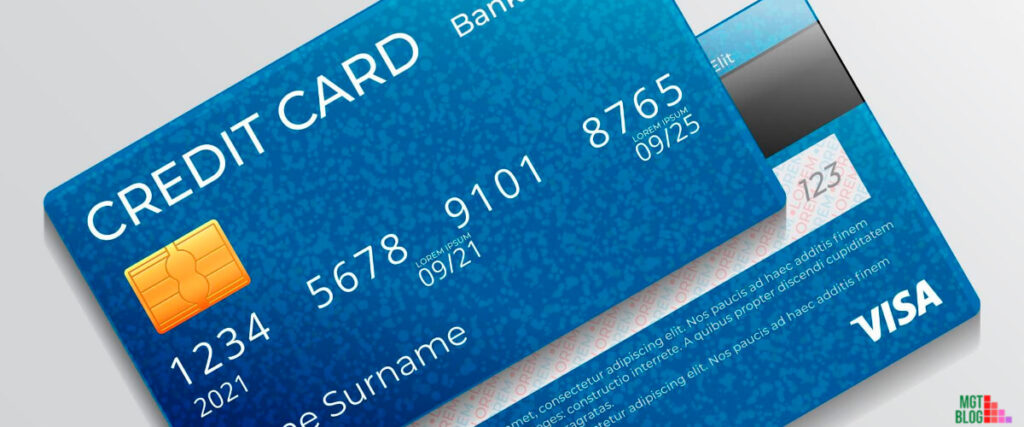The size of a credit card is commonly known as CR80 or size ID-1, a common standard worldwide. They measure 3.37 inches in width and 2.125 inches in height (8.56cm in width and 5.397cm in height). The International Standard Organization (ISO) decides the dimensions to make it convenient when using on-card machines like ATMs.
Key Takeaways
- According to the ISO, the standard size of credit cards, debit cards, driver licenses, national IDs, ATM cards, etc. must have the same dimension
- Having the same size for all types of cards is very convenient for the use of ATMs and other types of machines
- The thickness of credit cards with extruded text can vary, but that won’t impact the card’s operation
- Plastic used for credit cards is strong enough to withstand damage caused by sliding into the machines
Credit Card Thickness

The standard CR80 credit card is 0.0312 inches (0.76 millimeters). The thickness is often measured in Mil, where 1Mil is equivalent to the 1000th part of an inch. Therefore, 0.0312 inches converts to exactly 31.2 Mils. The thickness of credit cards with extruded text can vary, but that won’t impact the card’s operation. It will still swipe into the machine and transact successfully.
The thickness of a credit card is also dependent on the materials used to construct it. An apple credit card, for instance, is slightly thicker. Unlike other credit cards, it is made of titanium, therefore much more durable, and is about 0.0325 inches thick. Plastic, which is used to make most credit cards, is also thick and strong enough to withstand damage caused by sliding into the machines.
The slight difference is almost unnoticeable. All cards easily fit in standardized wallets and machines. The card will work fine as long as no part is tampered with and the card isn’t expired.
Why Does The ISO Decide The Size Of Credit Cards?
Credit cards are designed to fit ISO standards. A total of 162 countries belong to ISO, and all must adhere to ISO/IEC 7810#ID-1 guidelines for credit cards designs.
ISO and (International Electrotechnical Commission) IEC use the golden ratio to decide the card dimensions. This is true as per Pythagoras, an ancient mathematician; a ratio that is in balance and easily recognized by the human mind as an ideal. Lores associated with the 1:1.6 golden ratios are an emblem of perfect beauty, and that the ratio is remarkably found all through nature.
If financial institutions were to design their credit cards, there would be endless chaos and wastage of resources. That’s why ISO and IEC decide on every guideline from the thickness, tolerance of the credit cards, conformity, and materials used. Plus, other physical characteristics like flammability, chemical resistance, heat resistance, adhesion, and contamination.
And, despite the credit cards constantly changing over the years, their dimensions remain unchanged.
Credit Card Dimensions In Various Measuring Units.
This section provides the height, width, thickness, and corner radius of credit cards globally in different measurements.
| Credit Card Dimensions | Height | Width | Thickness | Corner Radius |
| Inch | 2.125 Inch | 3.37 Inch | 0.0625 Inch | 0.125 Inch |
| Centimeter | 5.39 cm | 8.56 cm | 0.159 cm | 0.318 cm |
| Millimeter | 53.98 mm | 85.6 mm | 1.588 mm | 3.18 mm |
| Pixels (72 DPI) | 225 px | 242.64 px | 4.5 px | 9 px |
| Pixels (300 DPI) | 637.5 px | 1011 px | 18.75 px | 37.5 px |
How Did The Credit Card Dimension Get Standardized?
The first credit card, issued in 1958 by the Bank of America, was different. It was bigger than the current credit cards though close to its dimension. The undisputed dimensions of the current card were based on the generic size of the first one. Other cards issued from the first time in that period, such as ATM cards, also had a major impact on the credit card dimension standardization. The very first ATM bank card was issued in London by Barclays bank in 1967. The ATM card had the same dimensions as the credit cards we have today.
The first POS machine was introduced in 1973, a few years after IBM issued the cards. The POS machines supported both credit cards and ATMs. The services offered were fast and convenient; hence demand shot up.
As time went by, ATM and POS machines in financial institutions became more famous around the world. However, the production of the devices was low as there weren’t enough manufacturers with the know-how. Lack of competition from manufacturers coming up with different cards also ensured the dimensions did not change.
Credit card dimension’s convenience in handling led the government and companies to design the same sized licenses, business cards, hotel cards, and other identification cards. This standardization made the handling and organization of different cards easier as they could be carried anywhere.
After the Credit cards boomed worldwide, the ISO and IEC issued specific standards for specific cards. The standard, ISO/IEC 7810:2003, gave out guidelines and rules for various cards and their dimensions, including the National identification cards and mobile sim cards.
The standard’s latest version, ISO/IEC 7810:2019, was issued in 2019-12.
How Are Credit Cards Designed?
Credit cards are sensitive and vulnerable to fraud. It’s because of this reason that manufacturers design them with complex security properties. These properties are mostly based on the card’s signature panel, account number, and magnetic stripe.
The properties are further discussed below.
Account Number
Every account number is unique to every credit card. It is a key piece of information required for financial transactions and must be cautiously secured. Companies are responsible for making credit cards use the law of statistics to ensure someone does not use an incorrect account number or make up a counterfeit.
Using long account numbers minimizes the chance of the number being used. Nine or more digits, as applied in credit cards, provide a billion unique numbers. If by any chance an incorrect account number is keyed in a financial institution’s system, it is immediately declined, therefore further minimizing fraud risks.
Signature Panel
The signature panel on the back of a credit card represents the owner’s signature. A forged signature can easily be detected, and a fraud attempt is stopped. The panel is protected from erasing by using a fingerprint design that is almost impossible to duplicate. And it falls off when someone erases the original signature.
Magnetic Stripe
The magnetic stripe, located at the back of the credit card, identifies the card as authentic. The stripe is coated with iron oxide particles that can only be encoded with binary information. The information coded on the strip can’t be decoded hence minimizing the risk of fraud.
What Are Credit Cards Made Of?
Credit cards are commonly made of plastic to grant them additional resistance against cracks propagation, twist, and bend. For credit cards, several thin plastic sheets are laminated together.
The center layer is usually made of PVC plastic resin and Polyvinyl Chloride Acetate. Pigments and shiny particles are introduced in the center layer to give the credit card a classic finish.
Plastic is also an added advantage for hot stamping digits and letters on the credit card. Hot-stamped data on a credit card is durable; therefore, financial institutions often don’t have to replace the cards.
Credit Card Fonts
The average font size on a credit card is about 12-16 points, depending on the financial institution. Different banks use different font types as there is no underlying standard for credit cards. However, most financial institutions use monospace font types such as Consolas, Lucida Sans Typewriter, Courier, Lucida Console, among others are used.
Final Thoughts
A CR80 has a width of 85.6 mm (3.37 inches), a height of 53.98 mm (2.125 inches), and a thickness of 1.588 mm (0.0625 inches). All credit cards in the world have these dimensions as they adhere to ISO’s guidelines.
Credit cards’ materials and ink can be changed as they won’t significantly impact the effective use of machines. But, the dimensions for credit cards and most cards cannot be altered and haven’t been for years. Going against the ISO guidelines and using different credit card dimensions would result in inoperable machines or global inconvenience.
Credit card laminating pouches significant for the credit card’s protection are 3.38 x 2.13 x 0.01inches which is slightly larger than the standard credit card. It is worth noting that credit cards have become the defining dimension of pocket wallets. This resulted in wallet manufacturing companies making standardized pockets for such items as credit cards.
References:
1. https://silkcards.com/blog/news/what-are-the-dimensions-of-a-credit-card-thickness-size/
2. https://myaurochs.com/blogs/news/whats-a-credit-cards-size
Last Updated on November 13, 2022 by Magalie D.

Magalie D. is a Diploma holder in Public Administration & Management from McGill University of Canada. She shares management tips here in MGTBlog when she has nothing to do and gets some free time after working in a multinational company at Toronto.





